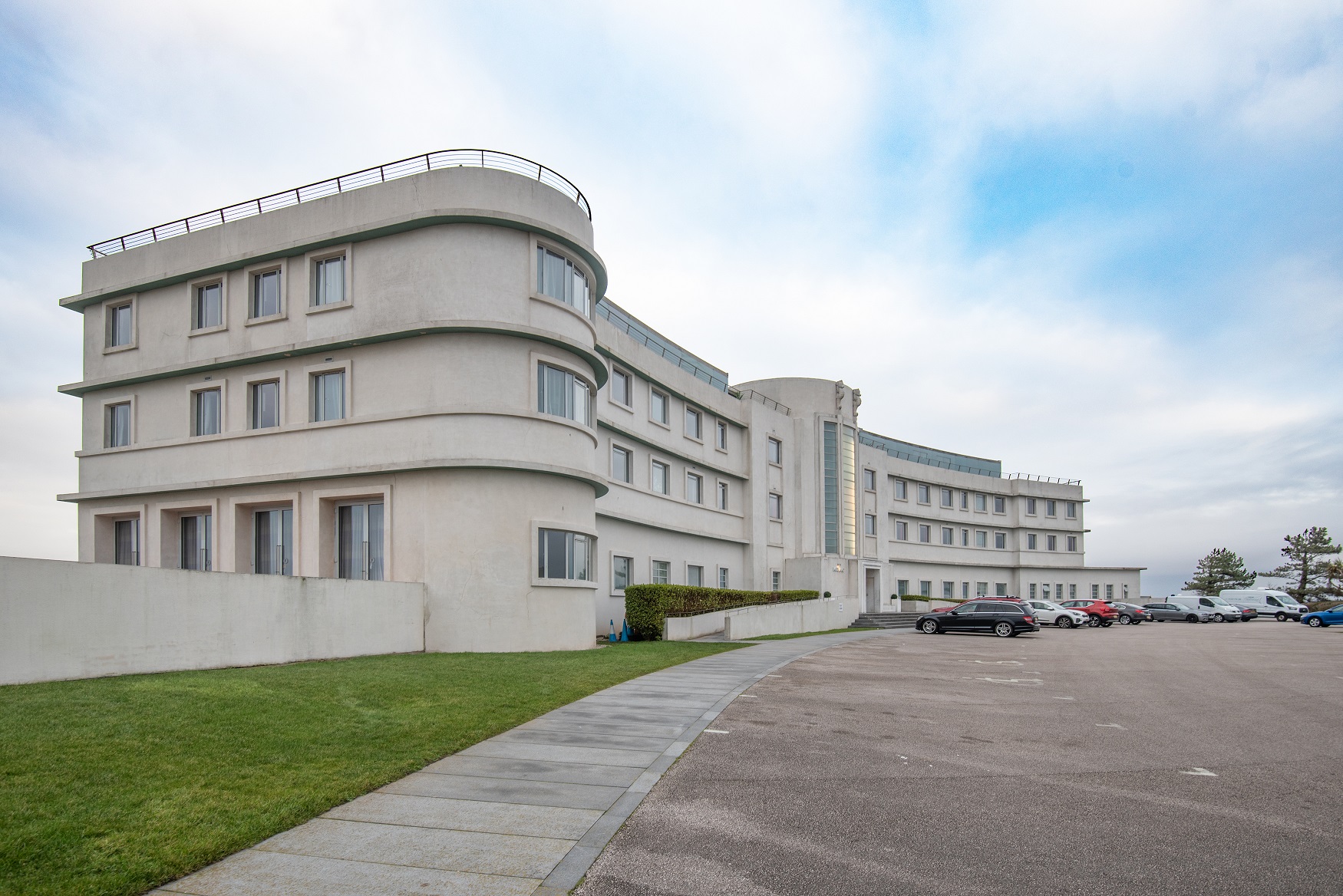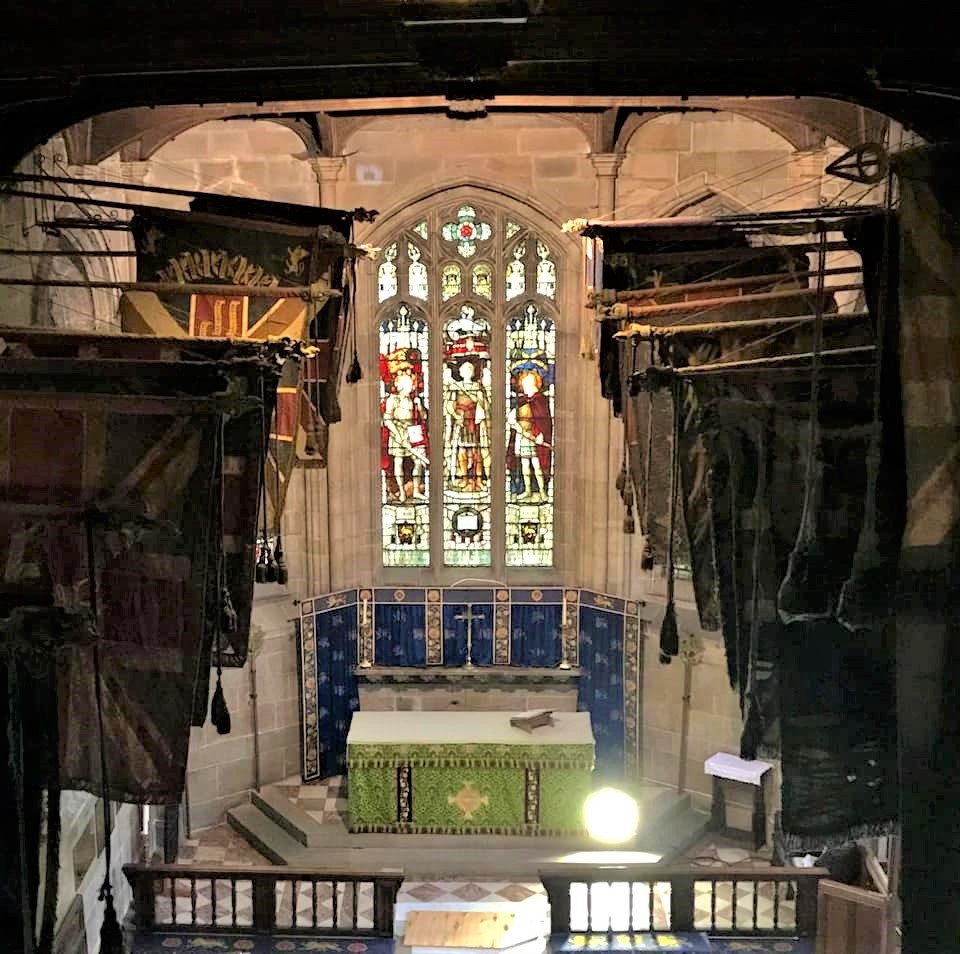March Into Our Wartime Heritage
Attention!!! In this 80th anniversary year since the end of World War Two, the Lancaster and Morecambe Bay district takes pride in its military heritage, some of which can be found in the most surprising places. From a terraced house in Lancaster city centre to a Morecambe Art Deco hotel and a clutch of pretty villages, all have fascinating wartime connections.
High Street in Lancaster is the birthplace of poet Laurence Binyon whose most famous work – For The Fallen – is regularly quoted at Remembrance services worldwide: “At the going down of the sun and in the morning, we will remember them.” And where better to experience the sun going down than Morecambe, home of the famous Midland Hotel which was requisitioned as an RAF hospital during World War Two.

Further inland, a journey through the beautiful Lune Valley by car, bus or bike brings visitors to Arkholme and Nether Kellet, Lancashire’s only two Thankful Villages, so named as they didn’t lose any villagers who served in World War One. Nether Kellet is also rare as a doubly Thankful Village, as it suffered no losses in World War Two either.
Also in the Lune Valley is the grave of the Rev Theodore Bayley Hardy, a former vicar of Hutton Roof who, at 54, became the most decorated non-combatant in World War One. Others who fought and died for freedom are commemorated across the Lancaster and Morecambe district with war memorials and memorial halls.
Lancaster is also home to one of the country’s few Memorial Villages, just a five minute stroll from the city’s railway station. Designed by acclaimed landscape architect, Thomas Mawson, whose son was killed in the Great War, Westfield Memorial Village has as its centrepiece, one of the rare war memorials designed by a woman – Jennifer Delahunt.
.jpg)
Nearby, Lancaster Castle became an internment camp in World War One where, among those interned was German national, Joseph Pilates who is said to have invented the popular form of exercise during this time.
In World War Two, the Castle hosted the Royal Observer Corps and the West Lancashire Territorial Association. Lancaster Castle’s neighbour, the Priory Church, is home to the King’s Own Royal Regiment Chapel, the first of its kind in England, built to honour those who had fallen in the Boer War. It is festooned with the largest single collection of Regimental Colours under one roof anywhere in the world.

The story of the King’s Own Royal Regiment is told inside Lancaster City Museum which incorporates regimental collections from the 1660s to the 1960s. During World War Two, the Museum was closed and the building used by the Canadian Treasury.
.jpg)
One of the many soldiers of the King’s Own Royal Regiment to be killed in World War One was Captain Julian Lawson Whalley whose sister Frances dedicated a field to his memory after his death. Miss Whalley’s Field is an official war memorial, boasting one of the best views of the Lancaster cityscape, and is maintained by the city council along with a dedicated Friends group. The former King’s Own Royal Regimental Depot at Bowerham Barracks is now part of the University of Cumbria. Many thousands of men were trained there including renowned footballer, Jimmy Armfield, who went on to captain England.
Jimmy wasn’t the only locally-based famous name to do their bit for the country. During World War Two, Eric Morecambe, then known by his real name of Eric Bartholomew, joined ENSA, the Entertainments National Service Association, set up to provide entertainment for Britain’s armed forces. Later, he was called up as a Bevin Boy and sent to mine coal for the war effort. Many dozens of children were evacuated to the district during World War Two, among them Frankie Vaughan who became one of the biggest music stars of the Fifties and Sixties, and acclaimed actor, Tom Bell.
Anyone interested in finding out more about the wartime heritage of Lancaster and Morecambe district can follow the World War One Walking Trail – On The War Path – and a virtual and real walk around Lancaster – The Hinge of Fate - Lancaster City Council and The Hinge of Fate: Living with Uncertainty in 1942
By Louise Bryning













